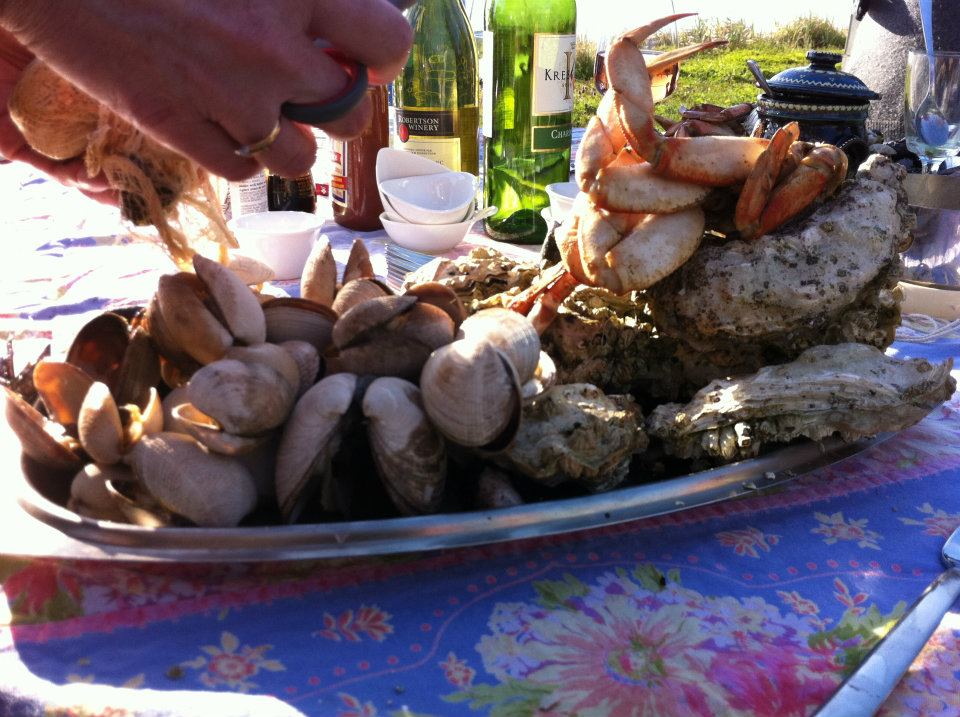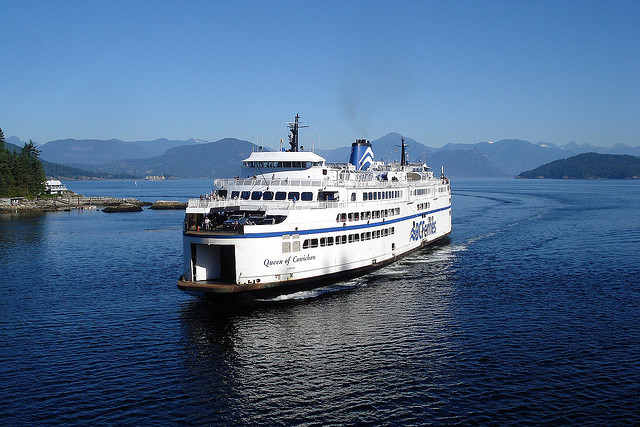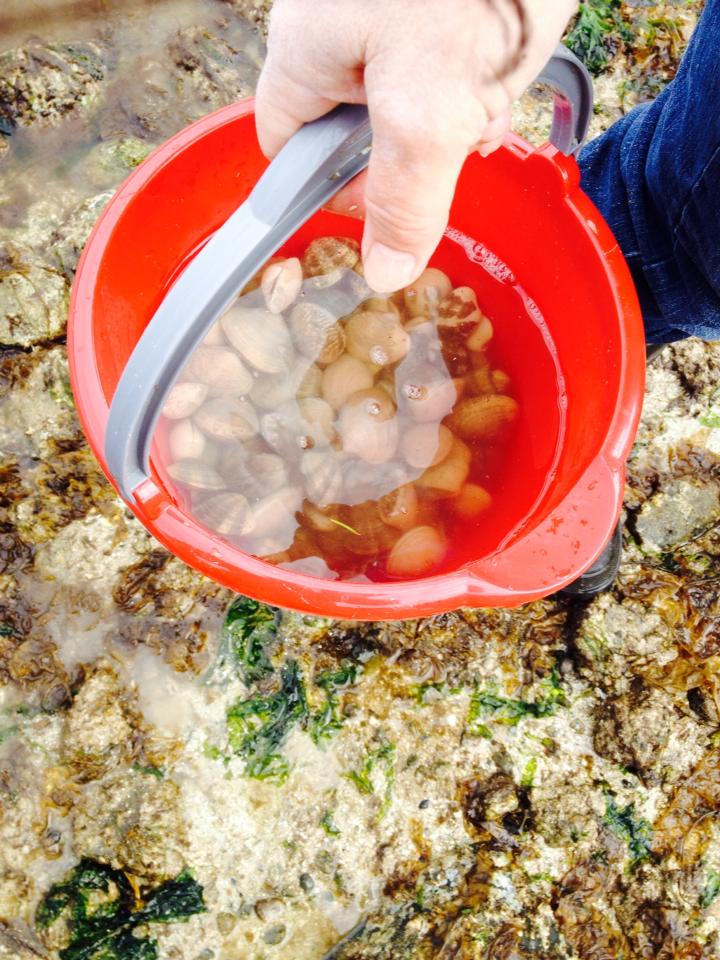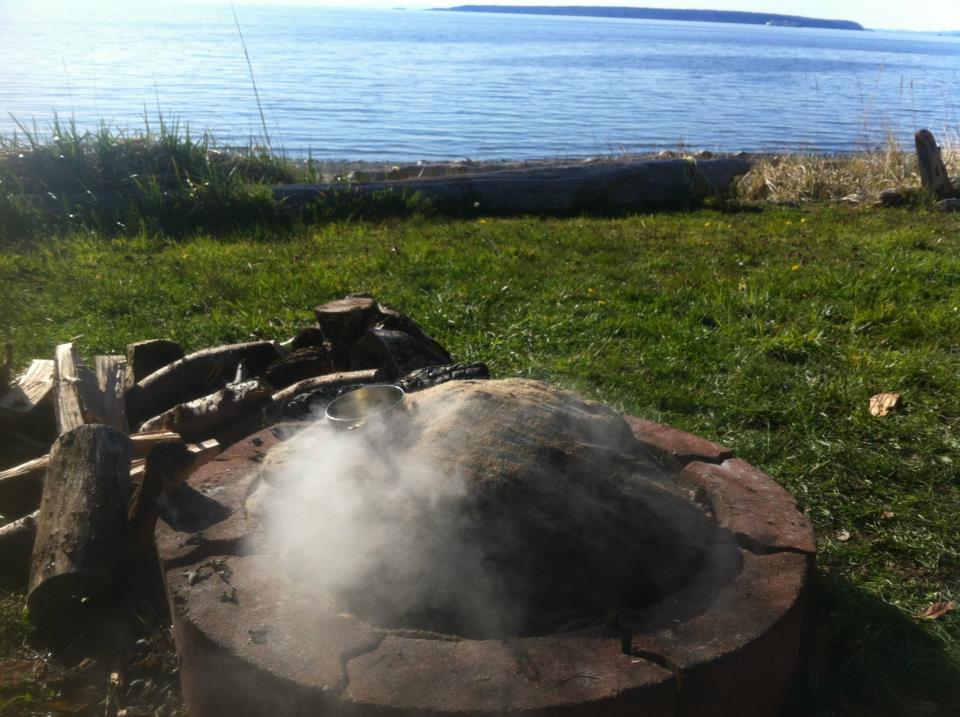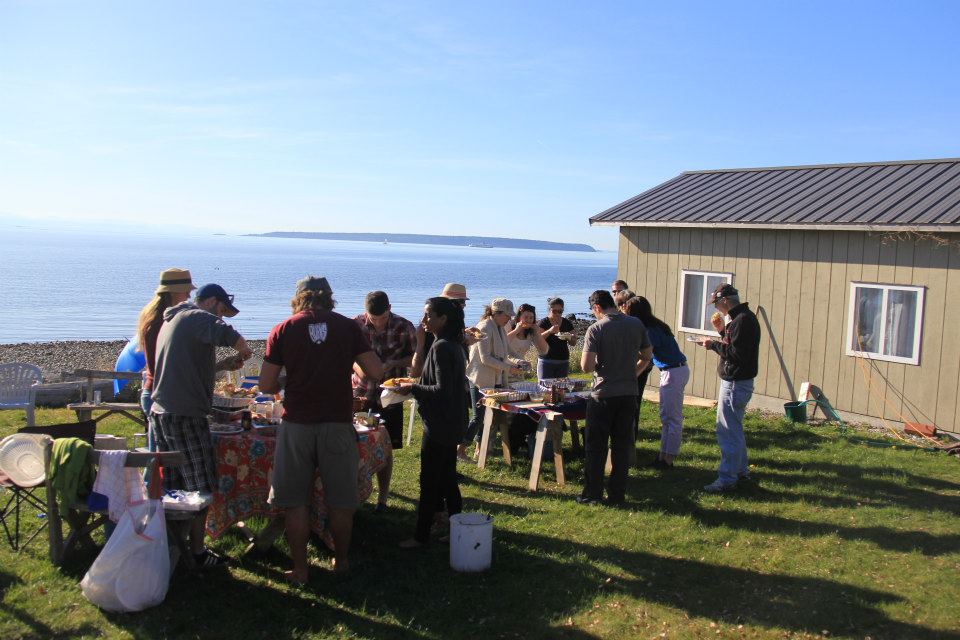A 4-step guide to having your own family style Easter Clambake
Powtown Post is pleased to introduce a new author–all the way from Toronto, Ontario!
Leah Camenzind has fond memories of growing up on a hobby farm in Powell River, BC – a long way from her current home in downtown Toronto. A Simon Fraser University alumnus, Leah is a marketing communications specialist with a penchant for purpose-driven organizations in the health and sustainability fields. She enjoys the beauty of the west coast, the multiculturalism of Toronto and the occasional visit to Switzerland to visit her extended family. Connect with Leah on LinkedIn.
Easter Clambake – A Powell River family’s traditional feast
Clams, oysters, mussels and crab – oh my!
Easter weekend has become an exciting time of year for our family. It’s evolved from a standard long weekend ‘trip home’ to our remote hometown of Powell River, to an annual seafood feast we like to call Clambake.
Celebrating the beauty of the west coast
It all started in 2010, when my Mom was looking for a New England clam chowder recipe for the clams we had harvested at a local Powell River beach. She treasures the west coast – for its forests, mountains, culture, but especially its ocean – its vast size, beauty and underwater creatures. After some online research, she kept noticing a recipe from the eastern US for a New England Clambake. She took the recipe and interpreted it for our west coast aquaculture and five years later it’s turned into a can’t-miss event for our family.
A 4 step guide to Easter Clambake
1. Gather the family from near (Vancouver) and far (Toronto)
The Thursday before Easter, the Camenzind kids rush to the BC Ferry terminal in West Vancouver to embark on the four-plus hour journey to Powell River. I’ve flown in from Toronto, and my brothers and sister-in-law have worked just a half-day to catch an early ferry up the coast. If you’ve never taken the trip from Vancouver to Powell River, you should this summer. It’s a scenic journey starting with a ferry ride through Howe Sound, followed by a 90-minute drive around 100+ curvy turns up the Sunshine Coast Highway and then – yet again – another ferry ride across the entrance to Jervis Inlet. By the time we reach Powell River we’re happy to see my Mom, waiting for us at the door with a big hug and news of the local tides and weather for Clambake.
2. Read the tide guide and check the weather report
The tide guide is an important aspect of Clambake. You need to know when the lowest tide is to determine when you’ll organize the crew to harvest the seafood. Oysters show themselves when the tide is low and they become exposed on the dry ocean floor. Clams are hidden in the seabed until diggers make fast work of shoveling them out from behind big boulders. Mussels are more tedious to harvest – you pry them off prickly barnacles clung onto big rocks. They can be tricky to get loose – but they’re worth it. We take turns shoveling for clams, wandering the beach for the right sized oysters and yanking mussels off of big rocks. There are typically about 10 of us roaming the beach, fishing licenses in our back pockets, heads down more or less in silence, concentrated on the task at hand.
Once we get back home with our catch, the clams get transferred into a freshwater bath so they spit out the saltwater. We call a family friend who’s a local fisherman for some freshly caught crab and then head to the grocery store for some Yukon Gold mini potatoes and corn on the cob. Now we’re ready to get cooking as soon as there is a break in the weather and the sun comes out.
3. Prepare the fire pit with rocks and seaweed
Eventually the sun does come out, it is the Sunshine Coast after all, and we spread the word to our friends that Clambake is happening today. By year five of this traditional feast, people start to fall into natural and familiar roles – I like collecting the seaweed, my two brothers collect the rocks, my sister-in-law makes seafood packages with my Mom, and my Dad gets the fire pit crackling. The seafood packages are a combination of the seafood (clams, oysters, mussels and crab), potatoes and corn wrapped in cheesecloth and tied together with a knot. I’ve learned over the years that cheesecloth is not fabric made of cheese; rather cloth used for making cheese – huh. We make about 15 packages – depending on how many of our friends we’re expecting to come.
To create the ideal cooking conditions for Clambake, we:
- Start a small fire in the fire pit
- Gradually add 7-8 rocks about 5-6-inch in diameter to the fire pit
- Let the fire die once the rocks have been heated for about an hour
- Load heaps of seaweed, two-feet high, on top of the rocks
- Add the seafood packages and top with another foot of seaweed
- Wrap the entire seaweed/seafood pile with 2-3 soaking wet burlap sacks
- Let bake for about 60-80 minutes
We place a test potato near the top of the seaweed heap. After 60 minutes we fish out the potato and poke it with a fork to check if it’s ready. If so, then the rest should be ready too.
4. Get ready to feast!
By now, a couple picnic tables have been set up around the fire pit. The tables are dawned in spring coloured tablecloths and scattered with lemon slices, melted butter infused with garlic, fresh French baguettes, cocktail sauces, and bottles of beer and white wine. Friends and neighbours we haven’t seen in a while come over, and we catch up while watch the small mountain of food steam away. Unraveling the heap of seafood in front of us usually causes some excitement. It’s thrilling to think you’re about to eat this self-harvested food that’s been cooking in seaweed, by the ocean, while surrounded by great friends and family.
The packages of seafood are placed on the tables and then… there’s silence. The chit chat of just a moment ago is replaced by thoughts of “What do I eat first?” Fast fingers pry out the juicy meat of a mix of oysters, clams, mussels and crab with the occasional potato and corn cob. Yum yum!
Saying goodbye at Christmas to Powell River, my family, and friends to fly back to Toronto is so much easier knowing that in just a few short months we’ll be back together for Clambake.
Leah Camenzind
Latest posts by Leah Camenzind (see all)
- 17 Pieces of Advice to Powell River Grade Twelves - September 26, 2016
- 5 Unique Places to stay in Powell River – that aren’t your parents’ basement - July 12, 2016
- A 4-step guide to having your own family style Easter Clambake - April 3, 2015
